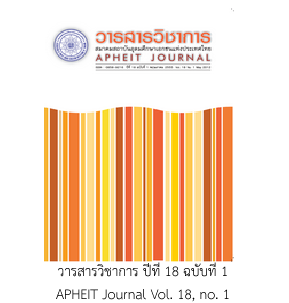Perceived Work Strain as Indicator for Occupational Risks in Thai Female Field Activities
Main Article Content
Abstract
Human activities are important in any socio-economic professional work system of which the efficiency and the occupational risks for the human integrity are determined by imbalances between the job related workload and individual capacity. Evaluating the risks linked to imbalances between workload and capacity requires not only objective analysis of working conditions but also the less evident perceived strain formulated in subjective symptoms which are good indicators for future problems.
This study reports about the use of the perceived discomfort by means of the SWI (Subjective Workload Index) questionnaire. The subjects rate their experienced discomfort on an 11 point scale ranging from 0 (no problems) to 10 (extremely problematic) for 6 ‘work-related load’ factors (fatigue, risks, concentration, complexity, work rhythm and responsibility) and 2 ‘compensating’ factors (interest in the job and degree of autonomy) which attenuate the perceived load. An average score exceeding 2.5 reflects a risky work condition. 334 Thai female subjects, aged between 33-35 years, active in 4 different occupations (nurses, construction, garment and office) voluntarily participated in the study and rated their perceived discomfort through the SWI questionnaire. Despite the huge diversity in activities and individual capacities the SWI revealed specific risk factors. The average score of the 4 occupations in this study was 3.1 ± 0.07 with significant differences between the occupations (P < 0.05, Cronbach’s Alpha 0.63), Conclusions: The SWI correlated significantly with some job-related factors and objective cardiac strain (0.81 to 0.51 P < 0.01) and revealed useful evidence based risk-information.

